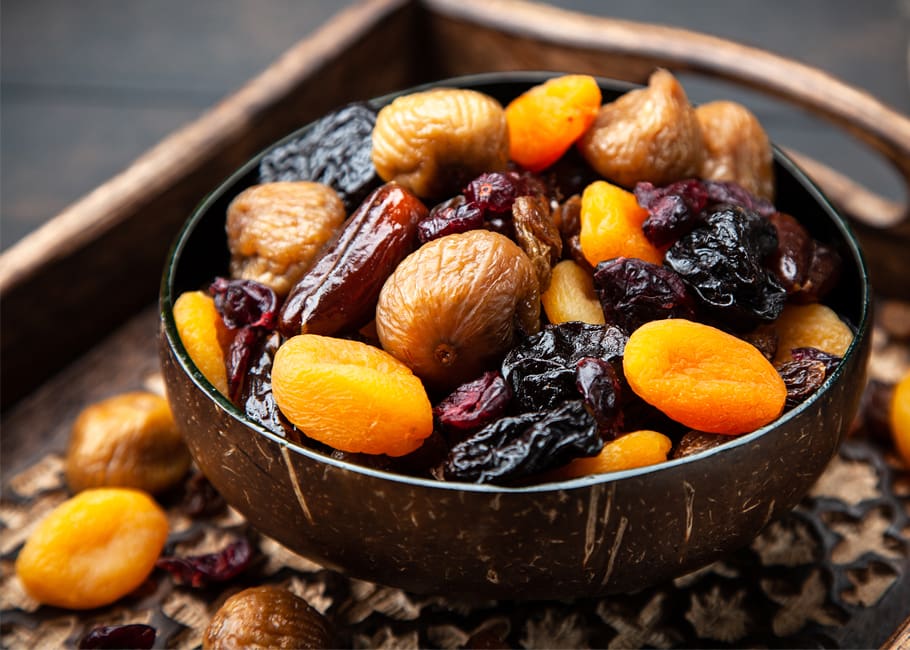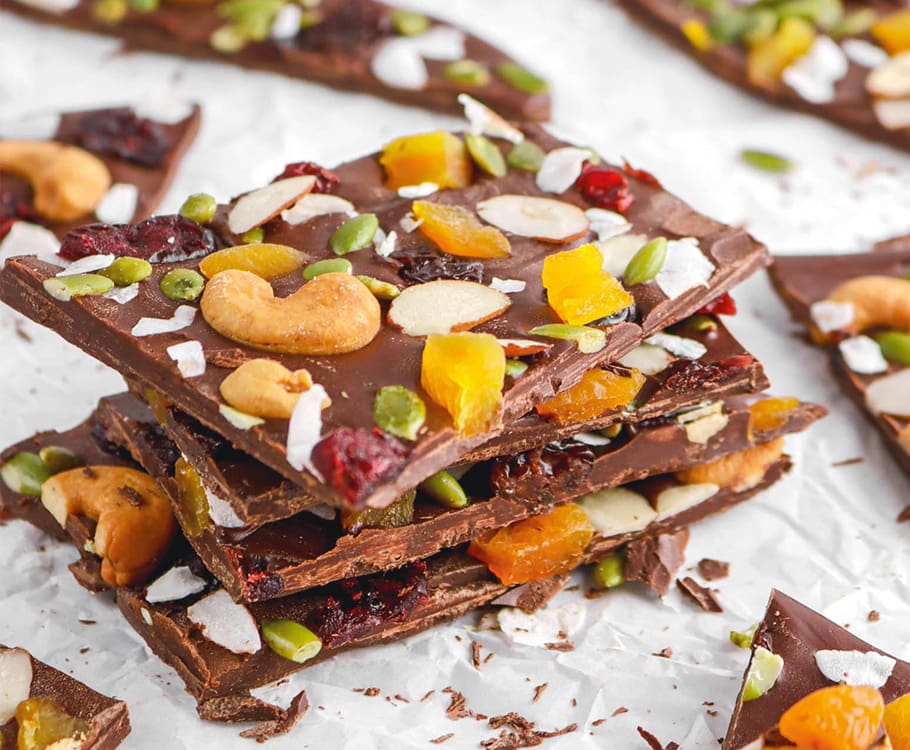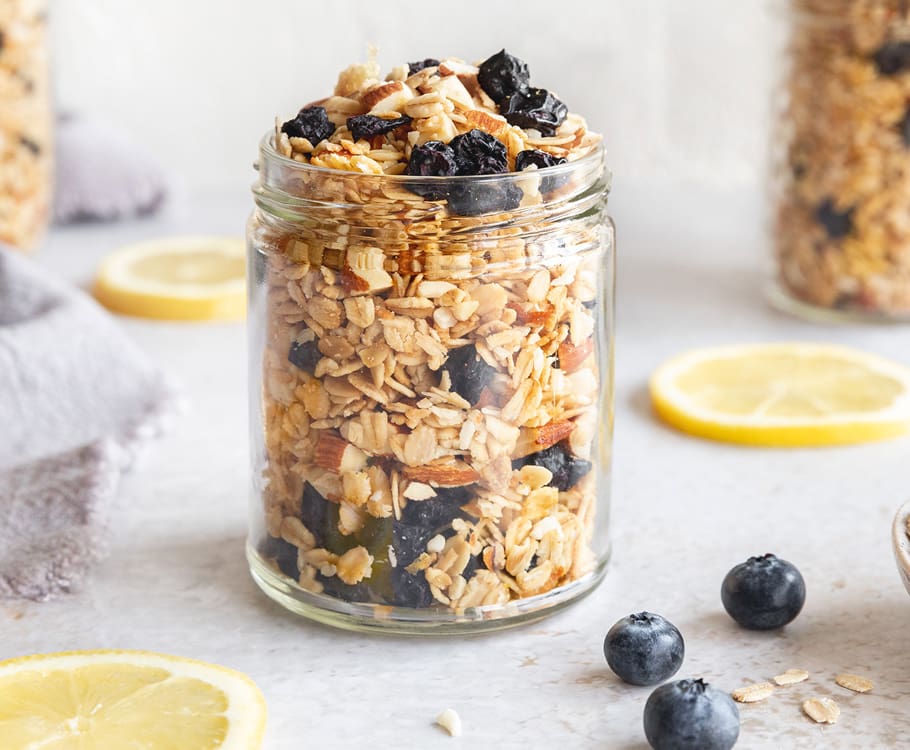For Your Table

© George Dolgikh / stock.adobe.com
Drier power
Dried fruit gives recipes added oomph
by HANNAH SELINGER
Dried fruit, preserved in the hot sun, dates as far back as 12,000 BC, according to the National Center for Home Food Preservation. Although dates and figs were some of the first fruit to be cultivated and dried, now a host of different offerings, from blueberries to mangoes to apricots, are available.
Dried fruit is a nutritional superstar, says Costco member Rosie Schwartz, a registered dietician, food writer and author based in Toronto. “They offer an abundance of nutrients, such as vitamin C and fibre,” she says. The fruit is also packed with antioxidants, and may protect against cardiovascular disease, certain cancers and even cognitive decline, Schwartz adds.
Dried fruit is also a holiday workhorse, useful in everything from savoury stuffing to an accoutrement accompanying appetizer cheese boards
“I can’t think of a dried fruit that isn’t good for baking, although some should be reconstituted—or plumped— beforehand,” says New York–based cookbook author Charlotte Druckman. She steeps dried fruit in sweet fortified wine, fruit juice or water so they don’t dry out during baking.
To rehydrate dried fruit, bring your liquid of choice to a boil, then pour it over the fruit to soak for 10 to 15 minutes. “This allows you to infuse them with flavour and, at the same time, to plump them up and bring them back to life,” she says.
Cathy Barrow, a food writer, cookbook author and recipe developer based in Frederick, Maryland, says that dried fruit is full of baking potential. “One of my favourite things to do with dried fruit is to add it to my pie fillings,” she says. She replaces a quarter of the total fruit with dried, which helps firm the filling. She also uses dried fruit in cookies— apricots with pecans, for instance, and plums with almonds—and makes breakfast breads and holiday scones.
“The same spices we associate with the holiday season are the same ones that complement the concentrated flavours and sweetness of dried fruit,” Druckman adds. Warm, woody spices, she says, like cinnamon, nutmeg, cardamom, star anise and ginger, pair with them naturally.
The best way to store dried fruit, Schwartz says, depends on how you intend to use them. “Dried fruit that will be eaten over a relatively short period of time, such as a few weeks, can be stored in containers or packaging in a dry, cool place.” If you plan to keep your fruit for longer, she suggests refrigerating—for up to six months— or freezing it for up to one year.
Hannah Selinger is a James Beard Award-nominated food and travel writer.
COSTCO CONNECTION: You’ll find a variety of dried fruit in Costco warehouses. Groceries are available for delivery through Costco Grocery at Costco.ca.



